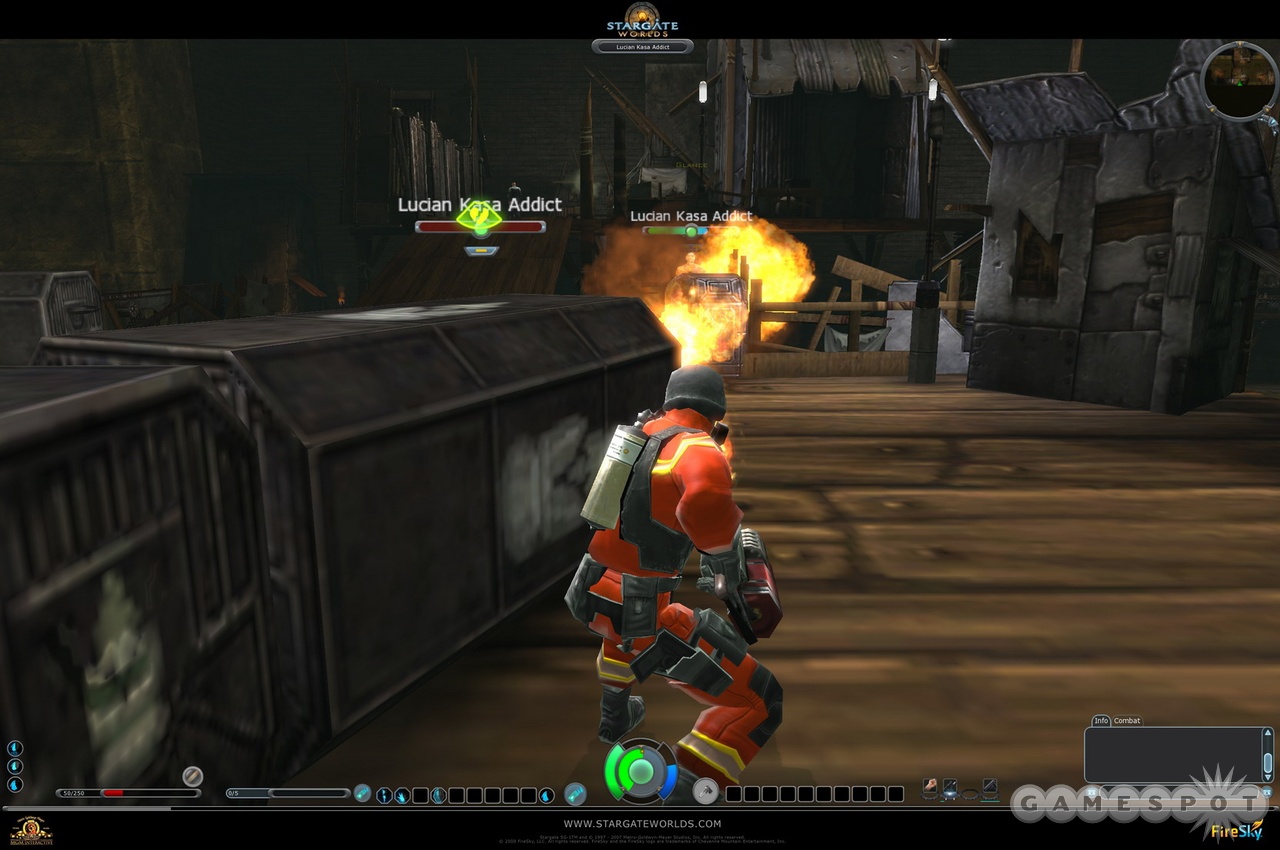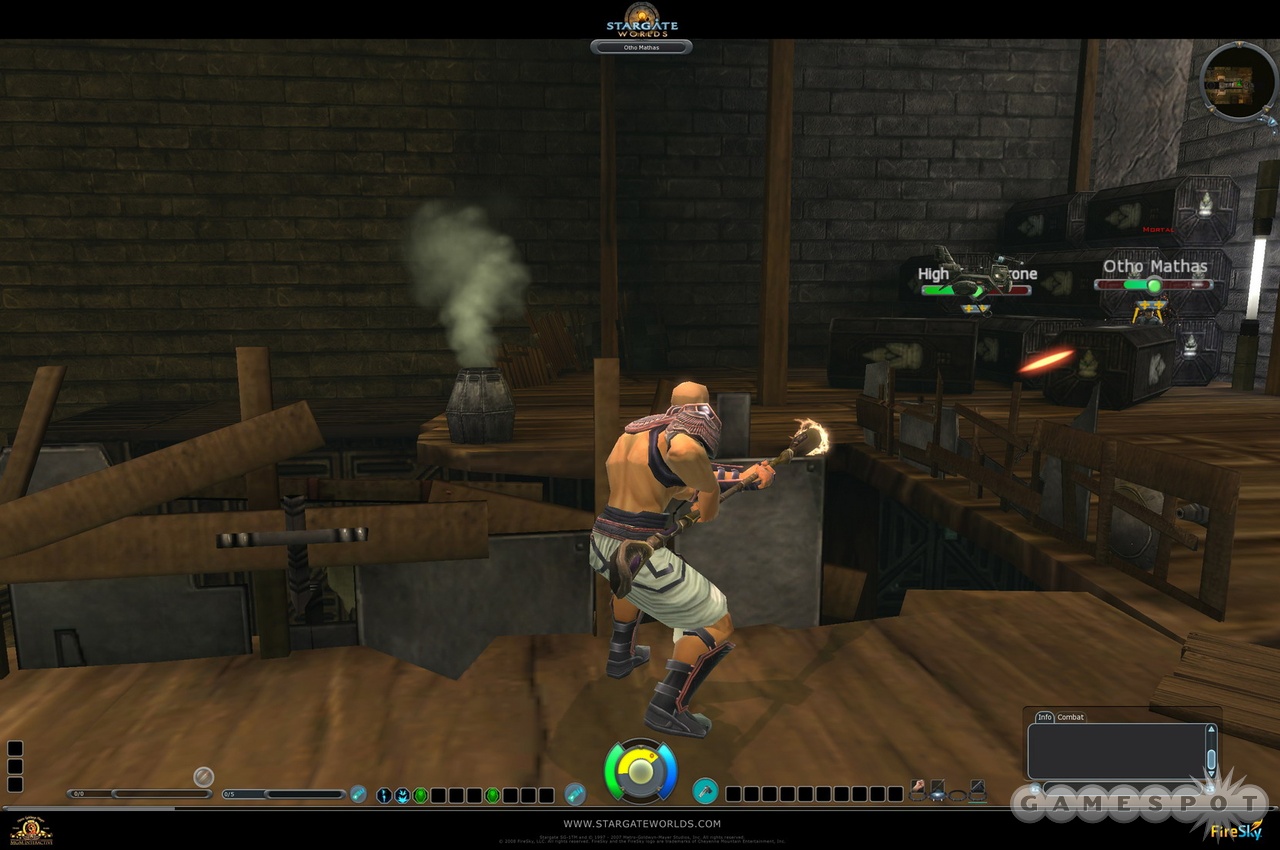Stargate Worlds Developer Q&A
New details on combat, weapons, and massively multiplayer minigames.
It started with a Kurt Russell flick and expanded into an entire universe, literally. The 1994 film Stargate is the progenitor of television series Stargate SG-1, Atlantis, and, slated to premiere on the Sci-Fi channel in the summer of 2009, Stargate Universe. The upcoming massively multiplayer online game Stargate Worlds will tap into the canon that has so enthralled science-fiction fans, while attempting to evolve traditional MMO gameplay to include tactical combat and even a cover system. We sat down with Chris Klug, the creative director of Stargate Worlds, to talk about his new combat system, alien weaponry, and the future of the Stargate story. Here's what he had to say.
GameSpot: The last time we had an update on the game, you had entered full production mode with the help of the Unreal 3 engine. Where are you at in development at this point?
Chris Klug: Just about to enter Closed Beta. We're almost finished with Friends and Family. Open Beta after the 1st of the year.
GS: It sounds like there are some ambitious plans for free expansion content after you launch Stargate Worlds. Is that still in the works, and what are some ideas from the television series that you envision would make great additional content?
CK: The first episode will involve the new world Meridian, where the player has to rescue an important person and battle the big bad's new allies. It is a world where many secrets about both the game and the show will be revealed. As for things from the TV series, much of what we're planning in that sphere is related to their new series, Universe. I can't really talk about that now.

GS: Combat in MMOs is evolving away from queued attacks to more visceral, tactical warfare. Tell us how the combat system has developed and grown from when we last discussed it.
CK: Well, it hasn't grown or changed so much as become fully realized. What we had planned for combat two years ago has come to fruition: a game of maneuver and tactics and not a hit-point battle. It is fun to play for its own sake, and I think it will make people look at combat in MMOs differently than they have in the past. Our one-on-many paradigm really alters the dynamic of the battlefield.
GS: The cover system is an exciting idea. What games did you model your system after? Is cover destructible or even mobile?
CK: We modeled our combat system after pencil-and-paper games more than computer games. Those people who have played it have said that like it's not like anything they've ever played before. They think it's going to play like one thing, but it plays differently, more visceral. Cover is neither destructible nor mobile. One interesting fact: It's all hand-placed, every single bit of it.
GS: You can't have combat without awesome weapons. Break down the weapon specialties of each player class and how they can be upgraded.
CK: I asked our combat specialist, Jay Ambrosini, to answer this question:
I could literally write a book on all of our different weapons types and their intentions, so I'm going to just focus in on one of our archetypes that we haven't talked about as much: the Goa'uld:
Staff weapons: The staff weapon is a long-range weapon of damage and destruction. While staves fire slowly, they pack a punch when they hit. The Goa'uld can fire blasts that will penetrate targets to hit multiple enemies in a line (beam attacks) or charge bursts to explode at a specific distance, damaging all enemies in the area.
Zat'ni'katel: While the staff weapon hits slow and hard, the Zat's is a short-range, fast-firing weapon. These are essentially the "pistols" of the Goa'uld, used to dispatch single targets quickly.
Ribbon devices: The ribbon device is a weapon unique to the Goa'ud. This weapon is a hybrid device used for both damage and utility. The ribbon device can fire a whole slew of cones, ranged and melee damage, channeled attacks, and various forms of crowd control to inspire fear or awe into their foes.
Ashrak daggers: How else would you expect an Ashrak assassin to kill their prey quickly and quietly? The Ashrak dagger is the weapon of choice to use from stealth to quickly dispatch your opponents. Abilities include snares, defensive debuffs, and multiple-hit combos to eviscerate your foes.
Finally, the energy weapons listed above (staff, zat and ribbon) come in multiple flavors. Their types include plasma, flame, ice, electricity, radiation, and more. Our goal is for players to carry multiple weapons for different situations. One weapon will not necessarily be the best for all situations.
GS: It sounds like you are really trying to reach out to gamers that may have shied away from MMOs in the past. What elements of Stargate Worlds do you think will most draw them in? Are you planning on any vehicles?
CK: One thing that we feel will attract other types of gamers are our minigames. These are small games that fall into the category of "casual" games that everyone can play. These games are used to simulate translating Ancient documents, hacking your way into a computer, and (best of all) distracting an enemy guard while your buddies attack. Yes, minigames are used by archeologists in combat. Second question, no there will not be any vehicles.
GS: Are there any special characters from the television shows that will make an appearance?
CK: All of the main show characters will appear in the game in one fashion or another.

GS: Tell us about your plans for competitive player-versus-player gameplay. How is PvP shaping up?
CK: Great. We have many passionate PvP players on staff, and we're going to make our PvP really cool. Understand that Stargate Worlds is a story-driven game, meaning that the game's story frames everything we do. So the big PvP push (which comes slightly after we launch) is set up by the Jaffa Civil War storyline. We're doing this so that other people besides the typical PvPer will be enticed into enjoying our PvP content. There will be missions, and new worlds, and new system enhancements, and new crafting enhancements, all tied in with PvP. If you've seen the cover art we're using, a female Jaffa, she relates to the Jaffa Civil war. Delaying full PvP--until slightly after launch--gives us the opportunity to see how PvP works on our PvP-enabled servers. This way, watching how it works in a big, open world, we can work out the inequalities and then launch it fully balanced and ready for everyone to play.
GS: Finally, what are you hoping players will experience when they finally play Stargate Worlds?
CK: I want everyone who logs in to have something to do that is fun. This game is for everyone, not just a select subset of MMO players. Everyone will have fun in Stargate Worlds.
Got a news tip or want to contact us directly? Email news@gamespot.com
Join the conversation